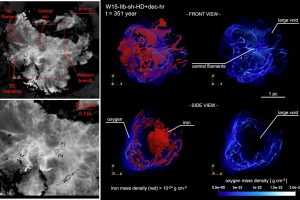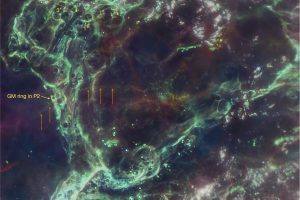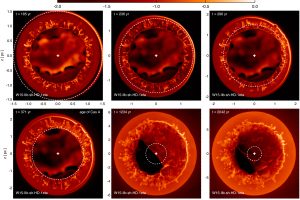Three outer jets in Cas A unveil the complex phenomena occurring in the interior of an exploding star. The paper: “Extreme anisotropies in deep layers of an exploding star: overabundance of Cr in the northeastern jet of Cassiopeia A” of V. Sapienza (INAF-OAPA/UNIPA) appeared on ApJL

In the supernova remnant Cassiopeia A, three jets rich in material synthesized in the innermost layers of the progenitor star reveal the secrets of the processes that occur in a supernova immediately after core collapse. Understanding the phenomena that follow the collapse of a massive star core is one of the most important goals of modern astrophysics. These processes
» Read more



